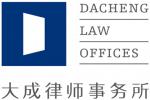A civil contract is entered into by equal civil subjects based on the principle of autonomy of will. Insurance contracts are a type of civil contract and have certain special aspects. They are usually standard contracts provided by the insurer, i.e. the insurance company. The proposer, as the passive accepter of a standard contract, is usually deemed the party in the weaker position at the time of application. Considering the potential for the insurer to exploit its contracting advantage by setting “contractual traps” in its standard contract that exempt it from liability, the Insurance Law establishes a system of limits on the validity of clauses that exempt insurers from liability in order to protect proposers’ right to know, when entering into a contract, and balance the interests of insurers and proposers.

Partner
Dacheng Law Offices
The second paragraph of article 17 of the Insurance Law specifies that “the insurer shall, when entering into the contract, provide on the application, insurance policy or other insurance certificate a reminder sufficient to draw the attention of the proposer to the clauses in the insurance contract that exempt it from liability, and shall expressly explain the contents of such clauses to the proposer in writing or orally. If no such reminder or express explanation is given, such clauses shall not enter into effect”.
In judicial practice, the foregoing provision seems to have been misunderstood, and even abused. In an insurance claim dispute, a certain insurance company even suspected that it had fallen into a “system trap” – so long as it was unable to show that the proposer had signed for receipt of the insurance contract, it was required to indemnify any of the insured’s losses, regardless of whether they were incurred as the result of an insured event or not.
On a certain date in 2012, a crane driver was operating a special-purpose vehicle to hoist and install a large piece of equipment. In the course of the operation, the boom of the crane snapped and its chassis cracked, sending the equipment crashing to the ground. The vehicle did not suffer a collision or tip over. After the accident, Zhang, the owner of the vehicle, reported the case to the insurance company. The insurance company appointed a claim adjustment company to survey the site, and an assessment institution to carry out a technical assessment of the cause of the accident. The survey and assessment concluded that there was a quality defect in the cast base of the hydraulic cylinder of the vehicle’s boom, and during the installation process, the chassis cracked and the boom snapped.
Zhang returned the vehicle to the plant for repairs, with the manufacturer issuing an explanation to the effect that “the long-term fatigue and overloaded use of the vehicle had resulted in damage”. Based on this, the claim adjustor recommended to the insurance company that it reject the claim on the grounds that the accident was not an insurable event and the loss to the insured vehicle did not fall within the scope of insurance liability specified in the insurance terms. The insurance company rejected the claim. Dissatisfied with the reason for the rejection, Zhang took the insurance company to court on the grounds that he had not received the insurance contract and did not acknowledge any of the liability exemption clauses in the contract, and demanded that the insurance company indemnify him for the losses to the vehicle.
The insurance company claimed that Zhang took out special vehicle loss insurance for the vehicle within the month prior to the accident, and at the time of the application it had served the insurance contract, insurance policy and invoice by mail at the address provided by Zhang. During the trial, Zhang claimed that he had only received the insurance premium invoice, not the insurance contract or policy. The court ascertained that, at the time of the application, Zhang had not personally signed the insurance contract and policy, the relevant documents instead having been signed by the insurance company’s agent on the behalf of the proposer. The existing exhibits failed to show that the insurance company delivered the policy to the proposer and that it had expressly explained to the proposer about the liability exemption clauses in the contract. Therefore, the court rendered a ruling to the effect that the insurance company was liable for indemnifying for all the losses to the vehicle.

Lawyer
Dacheng Law Offices
In current judicial practice, it is not unusual that in non-insured events insurers’ failure to prove that they performed their policy delivery obligations has resulted in their liability for indemnification. In similar cases the majority of the courts have ordered the insurance companies to pay indemnities on the grounds that the liability exemption clauses were not binding on the proposers. Exploring the commonalities in these cases, the circumstances are on the whole as follows: the proposer pays the premiums for the specific coverage, but does not personally sign the insurance contract and policy.
After the occurrence of a non-insured event, the insured demands indemnification and the insurer refuses on the grounds of a non-insured event. The proposer institutes a legal action, and the court finds, pursuant to article 3 of the Interpretations of the Supreme People’s Court of Several Issues Concerning the Application of the Insurance Law, that the insurance contract relationship was established and that, pursuant to the second paragraph of article 17 of the Insurance Law, the liability exemption clauses had not entered into effect, whereupon it renders a judgment ordering the insurance company to pay the indemnities.
It is the authors’ opinion that, in the above-mentioned rulings/judgments, even if there is no problem to finding that an insurance contract relationship has been established and that the liability exemption clauses have not entered into effect, rendering a judgment ordering the insurance company to pay indemnities nevertheless lacks a legal basis and is unreasonable. The logic of the judgment/ruling is deserving of discussion. The main reasons are as follows:
First, whether the event that caused the loss is an insured event is the basic factual issue of an insurance claim dispute case, and if this issue is not resolved, there is no place to begin the discussion of the insurer’s scope of insurance liability. Second, the clauses describing the scope of insurance liability are fundamentally different from the clauses that exempt the insurer from liability, and the legal provisions applicable to determining their validity are also different.
Third, the limits on the validity of clauses that exempt the insurer from liability may not be arbitrarily expanded into clauses that assign insurance liability. And finally, where an insurance contract relationship has been found to have been established, completely leaving aside the scope of insurance liability and settlement conditions in the insurance contract and directly rendering a judgment/ruling ordering the insurer to indemnify the losses runs counter to the spirit of the insurance contract.
The authors will analyse the key points of their argument in greater detail in next month’s column.
Xu Dang is a partner and Luo Huichao is a lawyer at Dacheng Law Offices in Beijing
7/F, Building D, 9 Dongdaqiao Road
Chaoyang District, Beijing 100020, China
Tel: +86 10 5813 7799
Fax: +86 10 5813 7788
E-mail: dang.xu@dachengnet.com
huichao.luo@dachenglaw.com
www.dachenglaw.com





















